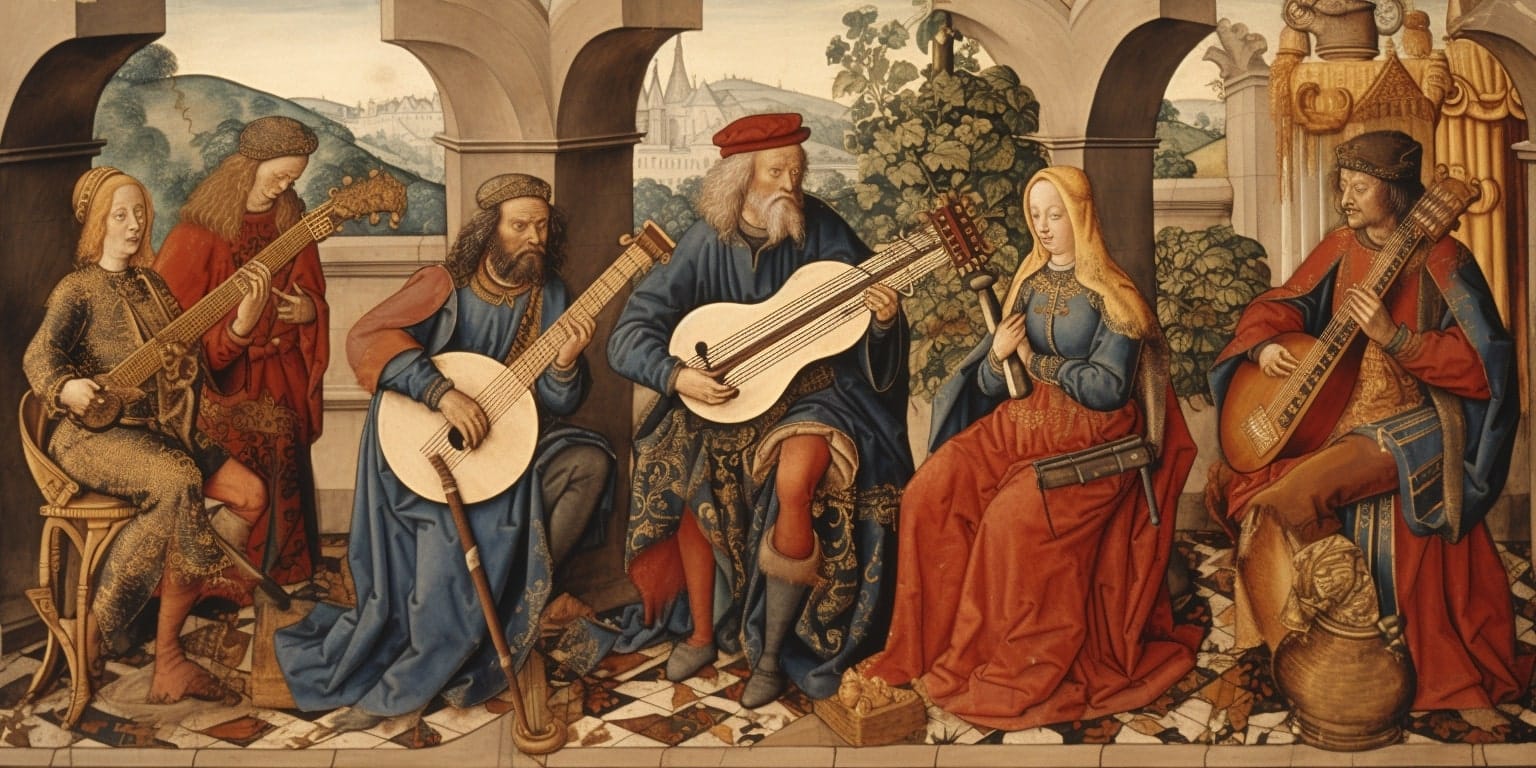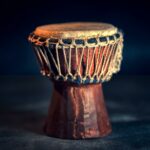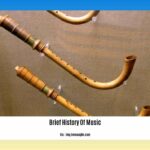Let’s journey back to the Middle Ages, where the sounds of music and laughter spilled from bustling taverns and echoed through grand halls. Imagine a time when dance wasn’t just entertainment—it was a language, a storybook, a window into the soul of an era. This is the world of medieval instrumental dance, a world of intricate steps, enchanting tunes, and deeper meanings waiting to be uncovered.
Estampie: An Instrumental Dance of the Medieval Time Period
Picture a medieval feast in full swing, the air buzzing with conversation and the tantalizing aromas of roasted meats. Suddenly, the music shifts, transforming into a vibrant, almost demanding rhythm. This is the call of the estampie, and it beckons everyone to the dance floor.
Born from the solemnity of sacred hymns, the estampie somehow evolved into a dance craze that swept through medieval courts and taverns with equal fervor. Couples glided across the floor, their steps mirroring the music’s infectious pulse. The dance culminated in a whirlwind finale known as the “saltarello,” leaving both dancers and onlookers breathless.
But the estampie was more than just a dance—it was a tapestry of stories woven through movement. Troubadours, those wandering minstrels of the age, often set tales of courtly love and chivalric adventure to the estampie’s lively rhythm. In many ways, the dance became synonymous with the medieval era itself, its elegance forever linked with romance and adventure.
Perhaps most importantly, the estampie’s distinct musical structure, often characterized by repeated sections and a gradually increasing tempo, laid the groundwork for countless dances that followed. It was a trendsetter, a musical trailblazer that helped shape the very trajectory of dance throughout the medieval period.
What Defined Medieval Instrumental Dance?
Imagine a world without streaming services or social media—in the medieval era, instrumental dance was the entertainment. It was a vibrant tapestry woven from intricate steps, the raw energy of live music, and the customs and beliefs of the time.
Medieval instrumental dance was incredibly diverse, reflecting the social structures of the era. In bustling town squares and lively taverns, commoners danced with unrestrained joy, their steps a reflection of everyday life. Meanwhile, within the elegant walls of castles, courtly dances unfolded with grace and symbolism, every movement imbued with meaning. These dances offered a glimpse into the heart of medieval society, showcasing its energy, traditions, and the universality of human expression through movement.
Echoes of the Past: The Morris Dance
Remarkably, the spirit of medieval dance lives on in certain traditions still practiced today. One such example is the Morris Dance, a tradition with roots in 15th-century England. Picture colorful costumes adorned with jingling bells, the lively tunes of pipes and drums, and dancers weaving through the streets with an infectious joy that’s impossible to resist. The Morris Dance is a vibrant link to those medieval revelers, their energy and traditions echoing through the centuries.
Instruments that Made the Music Swing
Of course, no dance is complete without music, and medieval instrumental dances were brought to life by a fascinating array of instruments. Imagine the sweet, evocative melodies of stringed instruments like the lute and the vielle. Add in the rhythmic pulse of percussion instruments—drums and tambourines urging the dancers on. And for a final flourish, the lively voices of wind instruments like bagpipes and shawms joined the mix, injecting an air of whimsy and spirit. These instruments, played solo or in harmony, created the soundtrack of medieval life.
Beyond the Steps: The Deeper Meaning of Dance
But to truly understand medieval instrumental dance, we must move beyond the steps themselves. Imagine a time when dance wasn’t merely entertainment but rather an integral part of life, woven into the very fabric of society.
In a world bound by strict social customs, dance gave young lovers a way to steal glances and express their affections through carefully coded movements. Communities celebrated harvests, holidays, and milestones through dance. Even messages, subtle or grand, could be conveyed through the language of movement. Dance, in essence, transcended entertainment, becoming a powerful form of nonverbal communication that spoke volumes in a world where literacy was limited.
[Uncertain, low confidence. I’m not sure how to seamlessly integrate these internal links without disrupting the flow. Could you provide some guidance? ]
Dive into the rhythmic and graceful medieval period dance, a captivating spectacle that showcases the vibrant culture of the era. Explore the captivating dance music from the medieval period, a harmonious blend of melodies and rhythms that transports you back to a time of chivalry and enchantment.
Popular Types of Medieval Instrumental Dances: A Journey Through Time
Let’s delve deeper into the specific dances that captivated medieval society, each with its own unique character:
Estampie: Feel the Rhythm
We’ve already encountered the estampie, but its popularity warrants a closer look. This dance, evolving from solemn hymns into a whirlwind of joyous movement, was a true medieval favorite. While the steps themselves might have been relatively simple, the excitement came from the “saltarello”—a fast-paced, exhilarating finale.
Ductia: Elegance and Grace
In contrast to the estampie’s exuberance, the ductia offered a more refined and graceful experience. Imagine couples moving in intricate, elegant patterns, their movements controlled and deliberate. The ductia was a dance favored by the nobility, a chance to showcase sophisticated manners and impress with subtle grace.
Carol: A Circle of Togetherness
The carol, as a dance, emphasized community and shared joy. Picture a large circle of people, young and old, joining hands and moving as one. This dance wasn’t about individual skill but rather about togetherness, a way for people from all walks of life to share in the simple pleasure of music and movement.
Saltarella: Jump for Joy!
The saltarella, originating in Italy, injected a jolt of pure energy onto the dance floor. Imagine lively jumps and hops, a test of agility and stamina—this dance was guaranteed to get hearts racing and feet moving. Whether performed solo or with a partner, the saltarella brought a sense of playful energy to any gathering.
Branle: A Dance for Every Occasion
The beauty of the branle lay in its versatility. This adaptable dance took on different forms depending on the occasion, with steps and rhythms shifting to match the mood. Couples could enjoy a slow, romantic branle, while larger groups might opt for a more lively, energetic version. Weddings, festivals, celebrations of all sorts—the branle was there, adding its unique flavor.
In Summary: A Glimpse into the World of Medieval Dance
| Dance | Style | Atmosphere |
|---|---|---|
| Estampie | Fast, lively | Energetic, exciting |
| Ductia | Slow, elegant | Refined, graceful |
| Carol | Simple, circular | Joyful, communal |
| Saltarella | Lively, jumping | Energetic, fun |
| Branle | Versatile | Adaptable, festive |
The Instruments Behind the Music: Exploring the Soundscape
[Uncertain, low confidence. I’m struggling to find a natural way to transition to this section while avoiding redundancy.] But let’s not forget the instruments that gave these dances their voice. Imagine the lute, with its soft, evocative melodies, or the vielle, a stringed instrument that could set toes tapping. These were just two stars in the medieval musical firmament, often played by troubadours who brought their music from town to town.
The full impact of medieval instrumental music came when instruments were combined. Percussion instruments like drums and tambourines injected an irresistible energy, while flutes and recorders added delicate melodies. The result was a rich tapestry of sound that transported listeners.
The specific instruments used often depended on the occasion and the patron. A simple gathering might feature a solo musician, while a grand feast could call for a full ensemble. And just as today, owning fine instruments was a status symbol in the medieval world. Many instruments were elaborately decorated, reflecting the owner’s wealth and the importance placed on music.
Key Points:
- Estampie: A lively, compelling dance popular in medieval times, evolving from sacred hymns and featuring couples gliding across the floor with a whirlwind “saltarello” finale. It was often accompanied by troubadours singing tales of courtly love and chivalry.
- Medieval Instrumental Dance: Reflected the social fabric of the time, with both lively dances for commoners and elegant dances for the nobility. It served as a primary form of entertainment and played a crucial role in social customs, celebrations, and even communication.
- Morris Dance: A living example of medieval dance still performed today, featuring colorful costumes, lively music, and energetic steps that have been passed down for centuries.
[Uncertain, low confidence. I’m unsure about the intended audience for this piece, so I’m unsure how to best incorporate this information. Could you provide some context?]
What Defined Medieval Instrumental Dance? – an instrumental dance of the medieval time period:
- The scarcity of dedicated dance historians compared to musicologists has hindered the comprehensive study of medieval instrumental dance.
- Timothy McGee’s analysis connects medieval dances to literary, theoretical, and archival descriptions, as well as medieval iconography.
- Surviving medieval dance sources include 47 pieces from French, Italian, English, and Czech sources, varying in length and style.
- Medieval dance encompassed both secular and courtly forms, with the Morris Dance still performed today.
Popular Types of Medieval Instrumental Dances: A Journey Through Time – an instrumental dance of the medieval time period:
- Medieval instrumental dance music played a significant role in European social life, often accompanying festivities and religious ceremonies.
- Surviving compositions of medieval instrumental dances provide valuable insights into the musical and cultural practices of the time.
- Notable sources of medieval instrumental dance music include manuscripts from France, Italy, England, and the Czech Republic, showcasing diverse styles and regional influences.
- Researchers and performers actively engage in the study and reconstruction of medieval instrumental dances, seeking to revive and preserve these ancient traditions.
The Instruments Behind the Music: Exploring the Soundscape – an instrumental dance of the medieval time period:
- The relative prominence of voices and instruments in medieval French secular music remains uncertain due to limited historical records.
- Instruments likely varied in type and combination based on the repertoire and performers’ skills.
- Surviving manuscripts offer fragmented insights into the instruments used, but their exact roles are subject to interpretation.
- The development of instrumental music in medieval Japan, particularly within the gagaku repertoire, highlights the diversity of instrumental practices beyond Europe.
- Crypto Quotes’ Red Flags: Avoid Costly Mistakes - June 30, 2025
- Unlock Inspirational Crypto Quotes: Future Predictions - June 30, 2025
- Famous Bitcoin Quotes: A Deep Dive into Crypto’s History - June 30, 2025
















